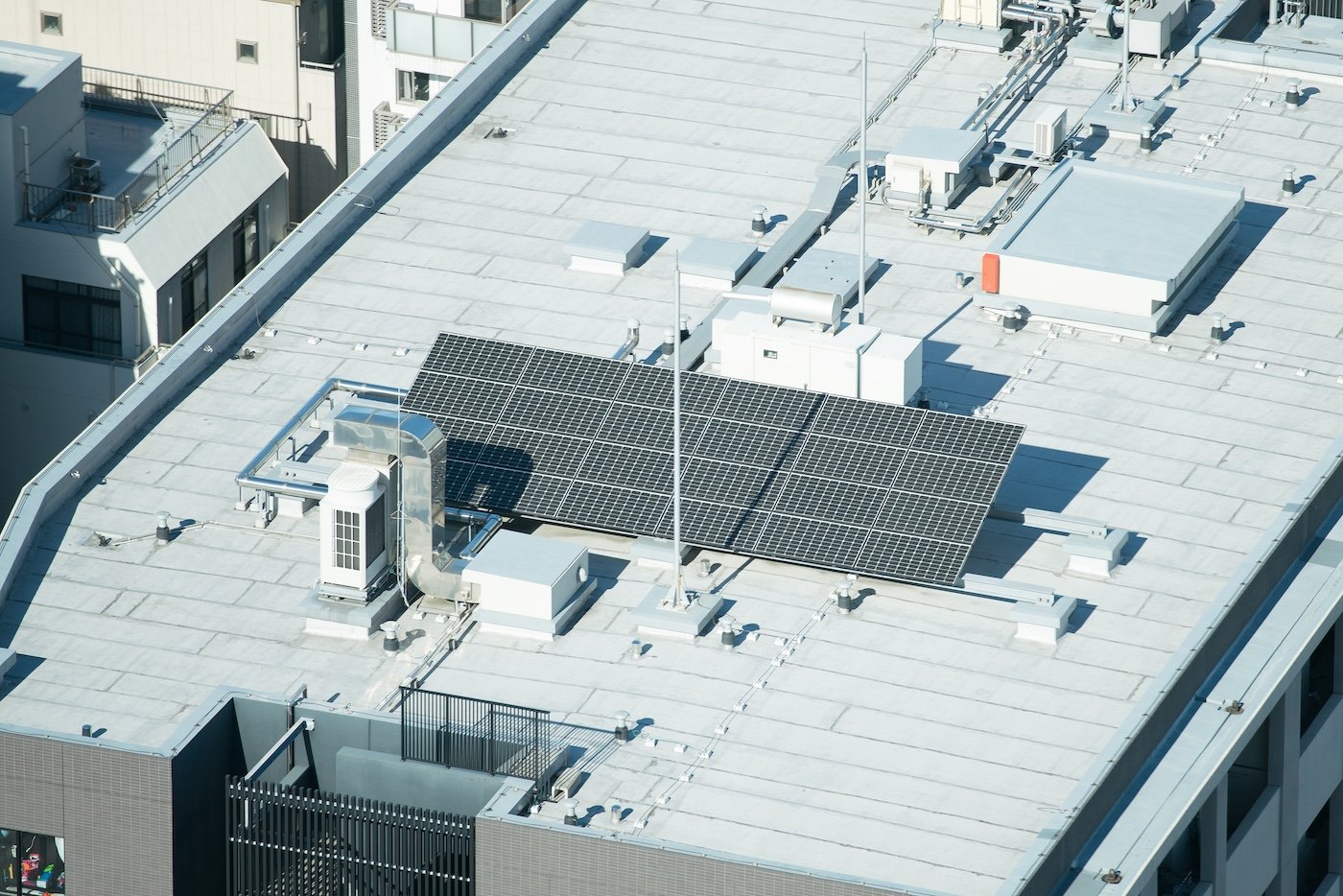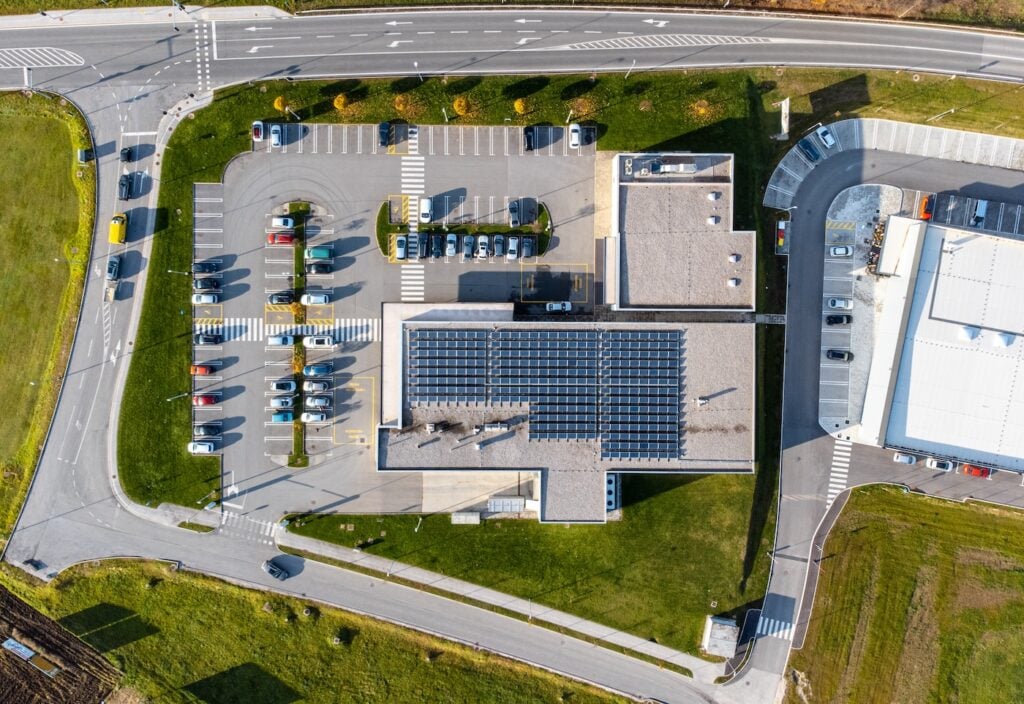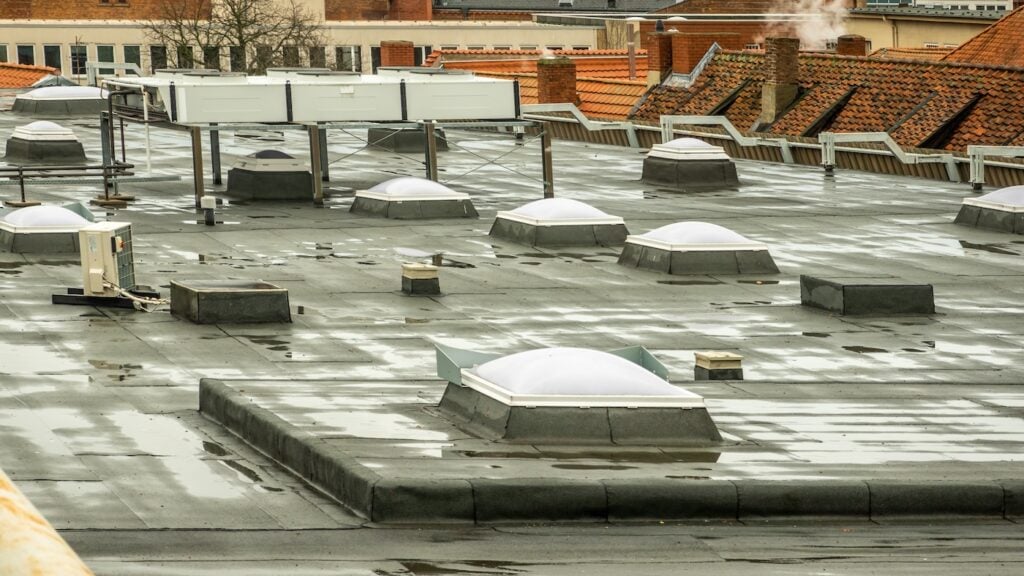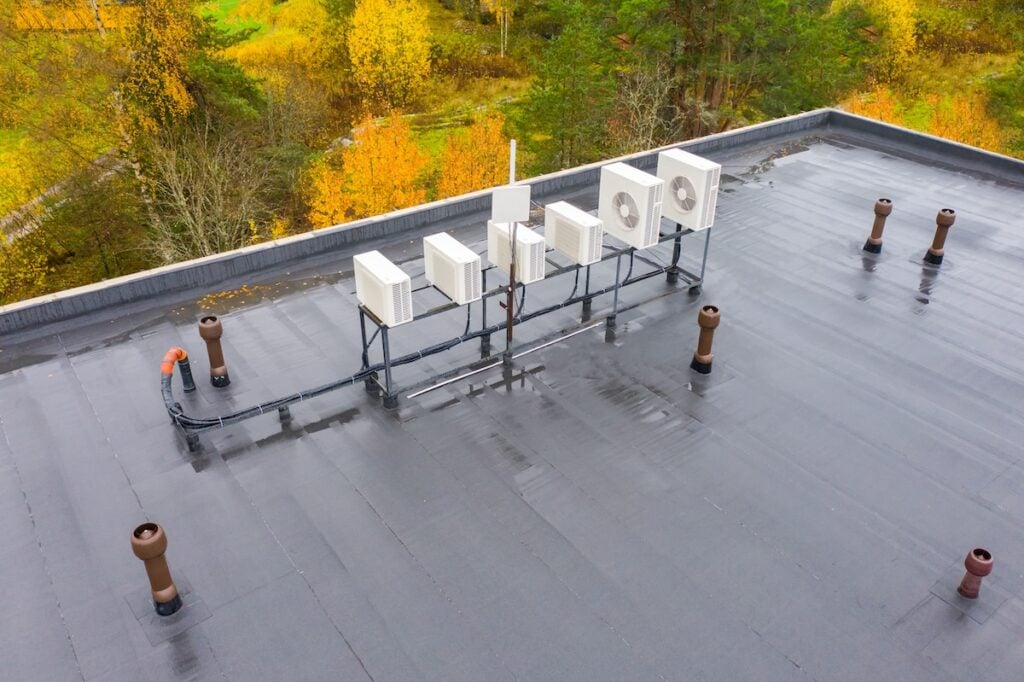
Commercial Flat Roofing (Best Materials, Lifespan & More)
10/10/25
6 Min Read
When it comes to protecting businesses and industrial properties, commercial flat roofing remains one of the most trusted and versatile solutions. Flat roofs offer accessibility, space for HVAC units, and cost-effective installation. With the right material and proper maintenance, they can provide decades of reliable protection for warehouses, retail centers, offices, and multi-family buildings.
In this guide, we’ll break down everything business owners should know about commercial flat roofs, including:
- Popular materials: TPO, EPDM, PVC, modified bitumen, and built-up roofing.
- Average lifespans: How long each system typically lasts in Ohio’s climate.
- Advantages: Why flat roofs are often the best choice for commercial properties.
- Maintenance needs: Tips for extending the life of your roof.
- Local insight: How flat roofs perform in Brunswick and surrounding areas.
🏢 Why Businesses Choose Commercial Flat Roofing

Commercial properties face different challenges than residential homes. They often have larger square footage, heavier equipment loads, and more complex drainage requirements. A flat roofing system meets these demands by offering durability, ease of installation, and cost-effectiveness. In a city like Brunswick, OH, where snow and rain are common, proper flat roof installation is critical to avoid water pooling and long-term damage.
👉 Common Types of Commercial Flat Roofing Materials
Each flat roofing system has unique benefits. Choosing the right one depends on climate, budget, and long-term performance goals.
TPO (Thermoplastic Polyolefin)
- Energy efficiency: White reflective surface reduces cooling costs in summer.
- Durability: Resistant to UV rays, chemical exposure, and punctures.
- Lifespan: Typically lasts 20–30 years with proper maintenance.
EPDM (Ethylene Propylene Diene Monomer)
- Proven reliability: One of the most time-tested flat roofing systems.
- Weather resistance: Performs well in both hot summers and freezing winters.
- Lifespan: Can last 25–30 years.
PVC (Polyvinyl Chloride)
- Strength: Highly resistant to chemical exposure and punctures.
- Flexibility: Welded seams create watertight bonds for superior leak prevention.
- Lifespan: Averages 20–30 years.
Modified bitumen
- Multi-layer design: Provides enhanced durability against foot traffic.
- Cold and heat resistance: Performs well in fluctuating Ohio temperatures.
- Lifespan: Lasts about 15–20 years.
Built-up roofing (BUR)
- Classic system: Uses layers of asphalt and felt for strong protection.
- Proven durability: Excellent resistance to heavy foot traffic.
- Lifespan: Lasts 20–25 years.
🤔 6 Key Considerations Before Installing Commercial Flat Roofing

When planning a new roof for your business, it’s important to evaluate your specific property needs. Here are five important factors to consider:
- Drainage system design: Proper slope and drainage prevent ponding water.
- Energy efficiency goals: Reflective membranes can reduce energy costs significantly.
- Budget and longevity: Some materials cost more upfront but last longer.
- Maintenance requirements: Certain systems need more frequent inspections.
- Contractor expertise: Flat roof installation requires specialized skills to ensure watertight performance.
- Building use and foot traffic: If your roof will be accessed frequently for HVAC servicing or other equipment maintenance, choose a material designed to withstand heavier wear, such as modified bitumen or built-up roofing.
⏳ Lifespan of Commercial Flat Roofing Systems
Not all roofing materials last the same amount of time. Here’s a quick breakdown of average lifespans:
- TPO roofing: 20–30 years.
- EPDM roofing: 25–30 years.
- PVC roofing: 20–30 years.
- Modified bitumen: 15–20 years.
- Built-up roofing: 20–25 years.
With regular inspections and preventative maintenance, many of these lifespans can be extended. In Brunswick, where heavy snowfall in winter can add extra stress to flat roofs, routine maintenance plays an especially critical role.
✅ Benefits of Commercial Flat Roofing
Beyond affordability, flat roofing systems offer advantages that appeal to business owners, such as easier maintenance access, added space for equipment, and reliable durability.
Accessibility for equipment
Flat roofs are ideal for housing HVAC units, solar panels, or other mechanical systems. This keeps equipment out of sight while allowing easy access for servicing.
Cost-effective installation
Compared to steep-slope roofs, commercial flat roofing requires fewer materials and less labor, making it more affordable upfront. For large commercial properties in Ohio, this cost savings can be significant.
Space efficiency
A flat roof can be used as a functional space. Some buildings convert their flat roofs into green roofs, rooftop patios, or additional storage areas. This flexibility can be particularly valuable in urban centers where square footage is at a premium.
Energy savings
Reflective surfaces on TPO and PVC systems reduce heat absorption, helping to lower cooling costs during Ohio’s humid summers. Businesses with large facilities often see measurable energy bill reductions after upgrading to reflective flat roofing.
💪 How Commercial Flat Roofing Performs in Brunswick

Businesses in Brunswick face a mix of weather challenges throughout the year. Flat roofs are designed to withstand heavy rain in spring, snow accumulation in winter, and heat in the summer. Proper installation and underlayment are key to preventing ponding water and leaks. We’re proud to serve business owners in Brunswick, OH, and nearby cities with commercial flat roofing installations, replacements, and more.
👷♂️ Working With the Right Commercial Roofing Contractor
Flat roofing requires expertise beyond typical residential projects. Partnering with a skilled contractor ensures that the roof performs as expected for decades.
Technical expertise
Commercial flat roofing involves specialized materials and techniques. A trained contractor knows how to handle large surface areas, seam welding, and drainage design.
Preventative maintenance programs
Many contractors offer ongoing maintenance services. Regular inspections help catch minor issues before they become major problems, extending the life of the roof.
Safety and compliance
Flat roofing projects often involve large crews and heavy equipment. A professional contractor ensures compliance with safety standards and local building codes. This not only protects your investment but also safeguards employees and customers during the project.
Local experience
Choosing a contractor familiar with Ohio’s weather patterns means your roof will be built to handle snow loads, wind gusts, and temperature swings common in the region. Local knowledge also ensures compliance with Brunswick’s building codes and zoning requirements.
🛠️ Protect Your Business With a Dependable Flat Roof
Your roof is more than just a cover — it’s an investment in the long-term success of your business. Commercial flat roofing offers durability, efficiency, and adaptability that other systems can’t match. At Buckeye State Roofing, our focus on experience, quality, and service ensures that every project is completed with precision and care.
If your property in Brunswick or the surrounding area needs a new flat roof, reach out today. Schedule a free inspection and discover why so many Ohio business owners rely on our team for their commercial flat roofing needs.
